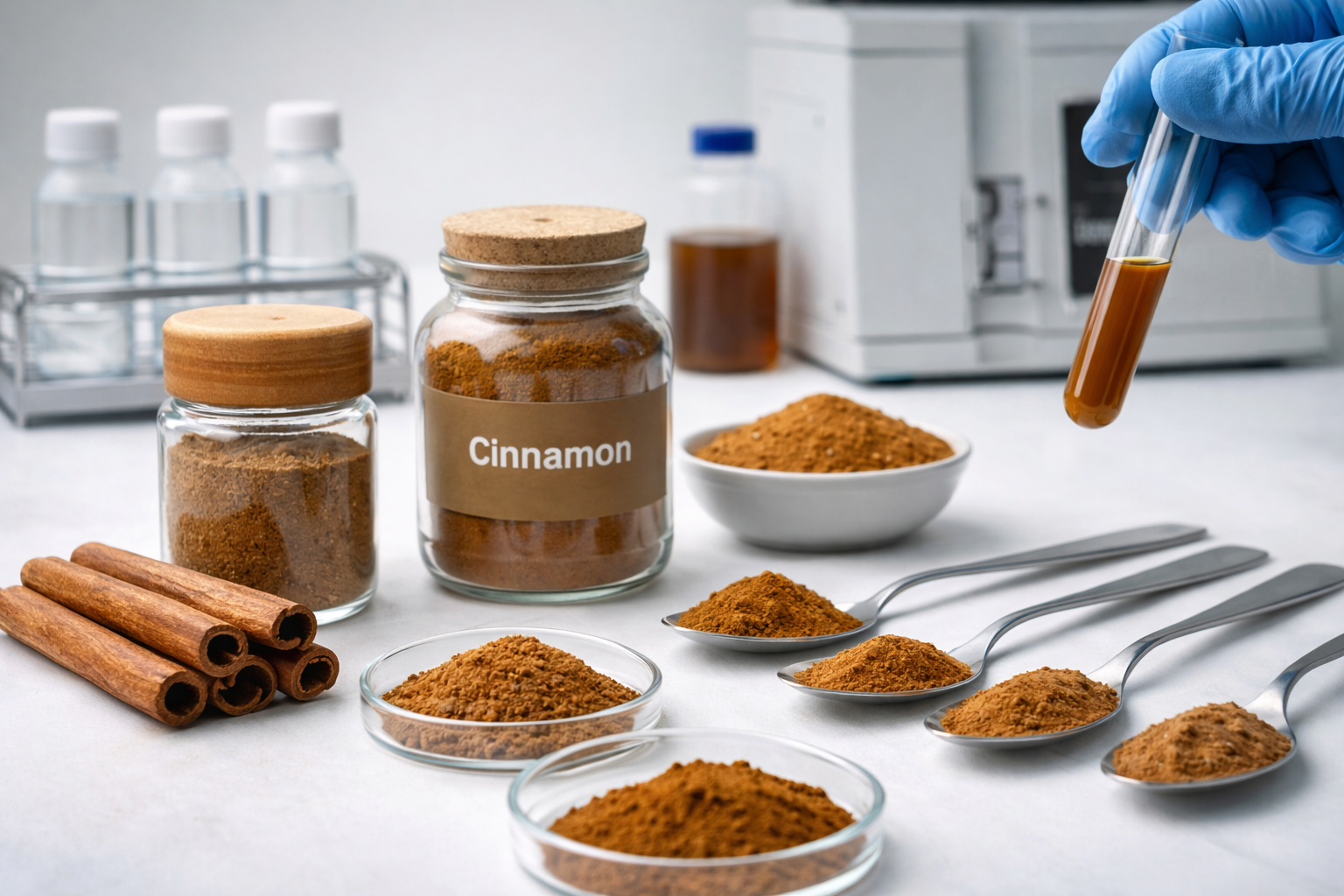Spices like cinnamon are beloved kitchen staples, but recent studies reveal a hidden risk: lead in cinnamon contamination. In 2021, research showed that over one-third of spices tested, including cinnamon, contained high levels of heavy metals like lead, arsenic, and cadmium, which pose serious health risks[1]. An FDA report from 2022 further found that some cinnamon products exceeded safe lead thresholds, with lead levels especially concerning for children due to their heightened vulnerability to neurotoxic effects[2].
Where Does the Lead Come From?
The journey from farm to table reveals several sources of lead contamination:
- Cross-Contamination: Heavy metals can spread between batches in facilities that handle multiple products without proper cleaning protocols[4].
- Inadequate Regulatory Enforcement: Insufficient oversight in certain areas allows contaminated spices to enter global markets without adequate screening[4].
- Soil Contamination: Industrial pollution and the legacy of leaded gasoline have left high levels of lead in soil, which plants absorb through their roots, eventually ending up in spices[4].
- Water Contamination: Contaminated irrigation water from industrial discharge or lead-containing pipes can introduce lead directly into plants during cultivation[4].
- Processing and Adulteration: In some regions, lead-based compounds are illegally added to intensify spice color, making them look more vibrant but unsafe. While this is often seen in turmeric and chili powder, cinnamon is also at risk[4]
FDA Import Alert 99-19: Protecting Consumers
The Import Alert 99-19 issued by the U.S. Food and Drug Administration (FDA) is the relevant Detention Without Physical Examination (DWPE) notice related to heavy metal contamination in food products, including spices. This alert identifies and detains imported food products containing unsafe heavy metals like lead, arsenic, cadmium, and mercury[3].
- Purpose: To protect consumers from food products, including spices, that contain harmful levels of heavy metals.
- DWPE: Products listed under this alert are subject to automatic detention without physical examination. Importers must prove their products are compliant before being released into U.S. commerce.
- Scope: While this alert applies broadly to foods that could be contaminated with heavy metals, it includes specific spices and products where contamination has been historically high.

What Triggers Inclusion Under This Alert:
- Laboratory Findings: Spices or food products found to contain lead levels exceeding safe limits (often defined by the FDA or other regulatory bodies) may be included in the DWPE list under Import Alert 99-19[3].
- Adulteration Practices: Spices intentionally adulterated with lead-based compounds to enhance appearance are prime candidates for detention.
Removal from DWPE:
Importers can request removal from the alert by providing documentation and evidence from a LAAF (Laboratory Accreditation for Analyses of Foods) lab, such as Merieux NutriSciences, showing that their products comply with FDA safety standards and contain lead levels below the permissible limits[4].
Actions for Importers:
- Testing: Importers must test their products for heavy metals, including lead, before shipping them to the U.S.
- Compliance: If detained, importers must provide evidence of corrective actions, such as sourcing from non-contaminated regions or improving processing practices to avoid lead contamination.
By issuing DWPE under Import Alert 99-19, the FDA aims to prevent contaminated spices and food products from entering the U.S. market and posing a health risk to consumers[4].
Beyond Heavy Metals: Addressing the Full Spectrum of Spice Risk
While heavy metals pose a chemical risk, the most immediate danger to public health and brand reputation is microbiological contamination.
- Proactive Pathogen Control: The primary food safety challenge in low-moisture products like spices remains the threat of pathogens, particularly Salmonella. As a global leader in food safety, our services go beyond chemical screening. We offer comprehensive microbiological testing and validation studies to confirm the effectiveness of sterilization methods (like EtO or steam pasteurization) and ensure your spices are free from harmful bacteria, protecting your consumers and eliminating the risk of large-scale recalls.
- Navigating Emerging Chemical Risks (EtO & PFAS): The regulatory landscape is rapidly shifting beyond traditional heavy metals. We provide advanced analytical chemistry for two major emerging concerns:
- Ethylene Oxide (EtO) & 2-Chloroethanol (2-CE): We offer highly sensitive testing using advanced chromatography to ensure compliance with stringent EU and global regulations concerning this fumigant residue.
- PFAS ("Forever Chemicals"): We are prepared for the next wave of regulations, offering sophisticated LC-MS/MS testing for Per- and Polyfluoroalkyl Substances, which may migrate into spices from the environment or packaging, ensuring future market suitability.
Defeating Economic Adulteration (Food Fraud): Sourcing high-value spices exposes your company to significant risk of food fraud, where cheaper substitutes or undeclared additives are used for economic gain. Our Food Fraud & Authenticity testing employs cutting-edge methods like DNA metabarcoding and Nuclear Magnetic Resonance (NMR) to provide an authentic chemical fingerprint of your ingredients, guaranteeing you receive the quality and purity you pay for. This is essential for protecting your procurement budget and maintaining brand integrity.
The Role of Mérieux NutriSciences in Ensuring Safe Imports
At Mérieux NutriSciences (MxNS), our Global Entry, Chemistry, and Spice services assist spice importers in meeting the FDA’s rigorous standards. Through accredited testing and verification, we help ensure that spices pass all necessary quality checks before hitting store shelves, protecting consumers and companies from potential health risks and costly delays. By connecting importers with our accredited labs, we work to keep these hidden hazards out of your pantry.
Be sure to join us at ASTA 2026. By partnering with our laboratories, we help identify and mitigate hidden hazards in spices—protecting public health as global demand continues to grow and food safety becomes increasingly critical.
References
[1] Consumer Reports. (2024, March 15). Your herbs and spices might contain arsenic, cadmium, and lead. Consumer Reports. https://www.consumerreports.org/health/food-safety/your-herbs-and-spices-might-contain-arsenic-cadmium-and-lead-a6246621494/
[2] U.S. Food and Drug Administration (FDA). (2024, March 15). Post-incident response activities: Elevated lead and chromium levels in cinnamon applesauce pouches. FDA. https://www.fda.gov/food/outbreaks-foodborne-illness/post-incident-response-activities-elevated-lead-and-chromium-levels-cinnamon-applesauce-pouches
[3] U.S. Food and Drug Administration (FDA). (n.d.). Import alert 1167: Spices and herbs - contamination with lead or other heavy metals. FDA. https://www.accessdata.fda.gov/cms_ia/importalert_1167.html
[4] Washington Post. (2024, March 15). Lead, spices, and cinnamon contamination: What you need to know. Washington Post. https://www.washingtonpost.com/wellness/2024/03/15/lead-spices-cinnamon-contamination/
